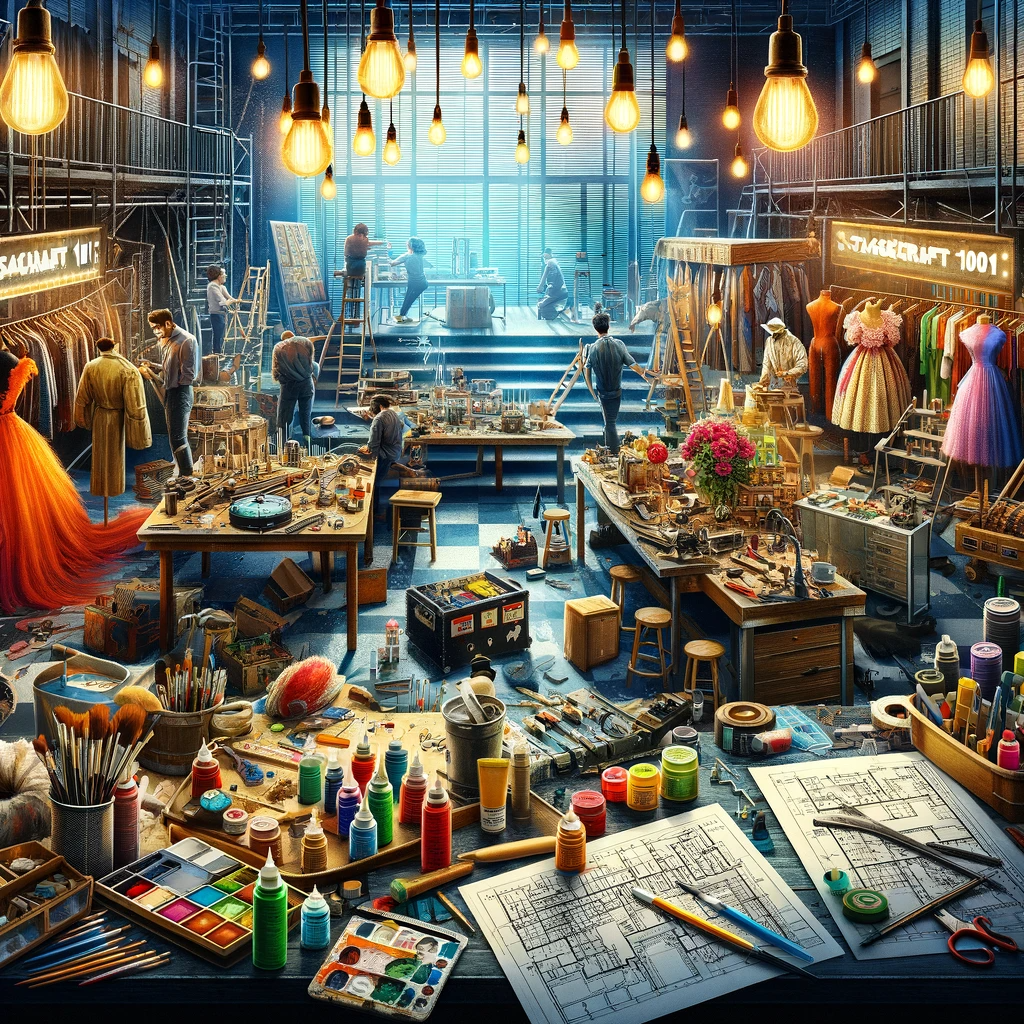When the curtain rises, the audience is transported into another world, not just by the actors and the story, but by the myriad elements of stagecraft that make the illusion complete. Stagecraft 101 is an introduction to the unseen yet vital components that form the backbone of theatrical magic, the behind-the-scenes craft that is essential to the art of theatre.
The Foundations of Stagecraft Stagecraft begins with the fundamentals: scenery, lighting, sound, costume, and makeup. Each element is a cog in the larger machine of the production. Scenic designer Laura Hawkins shares, “We’re the architects of the play’s world. Our sets are the canvas upon which the story is painted.”
Lighting: The Alchemy of Atmosphere Lighting is the alchemy that transforms the mood on stage. It can turn day into night, a room into an open field, and bring a sense of realism or fantasy. Lighting designer Mark Nguyen says, “With lighting, we’re painting with light and shadow, creating an atmosphere that can support the narrative or subvert it.”
Sound: The Invisible Storyteller Sound in theatre does more than just amplify voices; it’s the invisible storyteller. Sound effects and music cue the audience into the unseen and the unspoken. Sound technician Alisha Torres notes, “We sculpt the auditory landscape. The right sound at the right moment can make hearts race or soothe souls.”
Costume Design: Dressing the Character Costume design is where fabric meets character. A character’s clothes tell their story before they speak a word. Costume designer Andrei Petrescu says, “We dress actors not just to look the part but to feel it, to move as the character would, in garments that speak to their lives and times.”
Makeup and Wigs: The Transformation Art Makeup and wig design are the arts of transformation. They allow actors to step into their character’s skin, age, transform, and even become something non-human. Makeup artist Elena Vargas explains, “Our brushes are the tools that help an actor’s transformation become believable, relatable.”
The Art of Prop Making Props are the touchable parts of the stage that actors interact with, grounding the performance in a tactile reality. Prop master Khaled Abbas says, “Every prop has a story. It’s not just about looking right; it’s about being a believable part of the world we’re creating.”
Stage Management: Orchestrating the Show Stage management is about orchestrating the show. They are the directors’ right hand, the actors’ confidant, and the crew’s leader. Stage manager Lisa Wong states, “We’re the hub of communication, the keepers of the script, and the timekeepers of the production.”
Technical Direction: Engineering the Experience Technical direction involves the engineering of theatrical experiences. It’s where design meets reality, requiring a mix of creativity and practical problem-solving. Technical director Amir Patel adds, “We ensure that the grand visions for sets, lighting, and sound are not only achievable but safe and effective.”
The Role of the Audience in Stagecraft Finally, stagecraft includes the audience. The layout of the theatre, the acoustics, and even the comfort of the seating can affect the experience. Theatre manager Sophia Liu remarks, “The audience’s experience begins the moment they step into the theatre, and every element of stagecraft is aimed at making it unforgettable.”
Stagecraft 101 is just the tip of the iceberg, a glimpse into the complex interplay of skills and disciplines that come together to create the art of theatre. It’s a reminder that what we see on stage is just the final product of a deeply collaborative and creative process, a process that is as practical as it is imaginative, and as technical as it is artistic.
This article serves as an introductory exploration into the various elements of stagecraft that contribute to the magic of theatrical productions, offering insights into the collaboration and technical artistry required behind the scenes.


